One of the greatest feelings in any competitive sport is being on a roll.
This can completely turn the tide for a losing team or help crush an opponent. When players are on a roll, they are repeatedly doing something successfully such as consecutive first downs in football, strikeouts in baseball, or, rather appropriately, strikes in bowling.
When players are on a roll, it almost seems easier to keep succeeding at something difficult because momentum is on their side. It is hard to stop someone on a roll because the power of positive thinking kicks in: they believe they will keep succeeding and they do actually perform better. The opposing player experiences the sane thing but in reverse: the power of negative thinking.
“On a roll” is commonly thought to have originated with gambling, specifically craps, a game in which players keep rolling the dice with every winning roll. For games of chance as much as games of skill, being on a roll is almost like magic.
Of course there is no such thing as magic (Hogwarts aside), yet it can feel like something spooky is going on when someone is on a roll. In reality it just is a weird and temporary combination of skill, circumstance, and a healthy dose of luck coming together to create the illusion that someone is going to keep winning.
But sometimes, being on a roll has nothing to do with luck and in fact has everything to do with careful and patient preparation, extreme attention to detail, the persistent pursuit of perfection, and the skill of proper implementation.
One recent example of this is the new brand Ming, spearheaded by well-known collector and photographer Ming Thein.
With the launch of the 17.03, the third timepiece from the brand in six months (a brand-new brand at that), Ming has once again created something awesome at a great price that has been meticulously considered in every way.
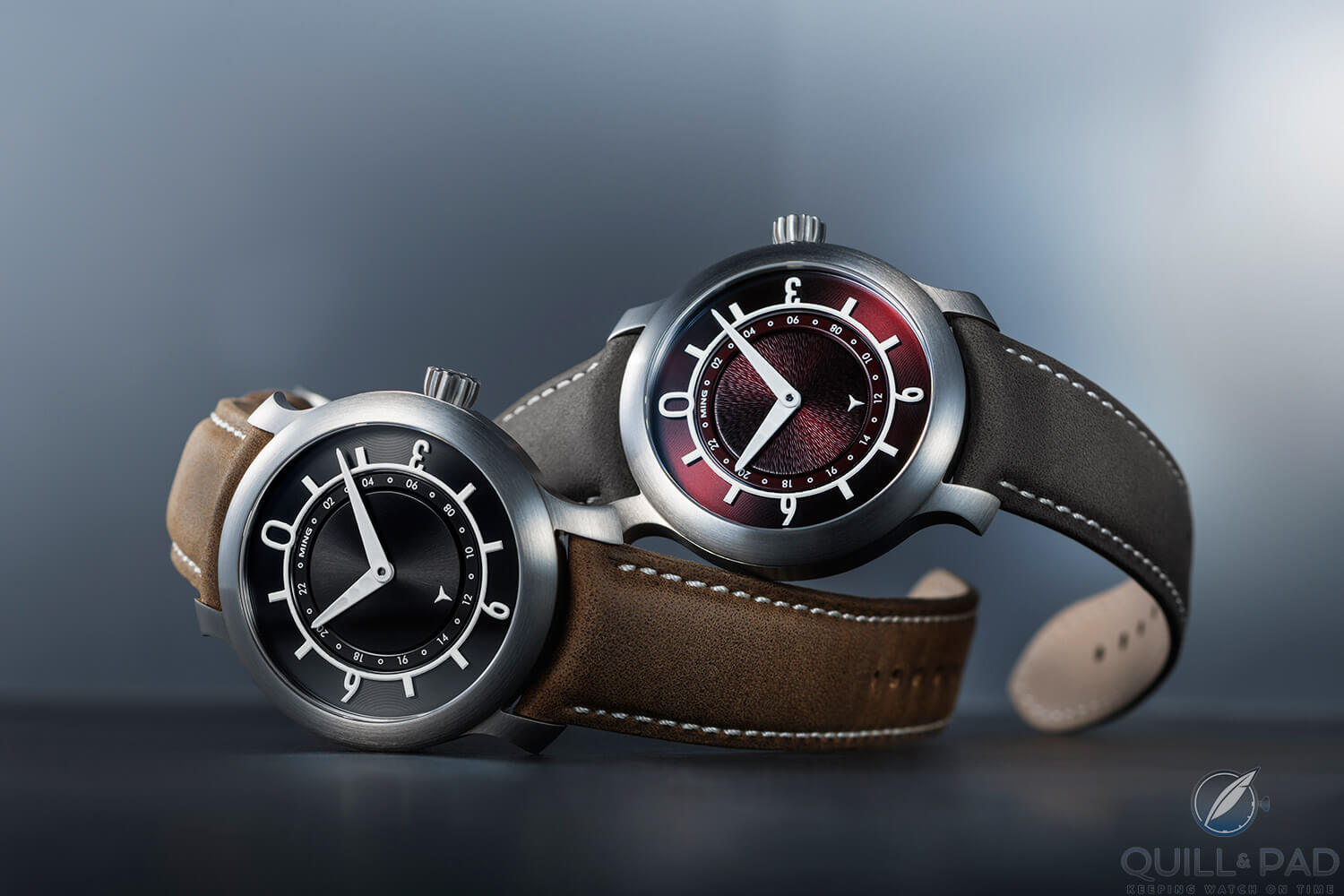
The Ming 17.03 in two dial variations
I would say that after three fantastic pieces, and more on the way, Ming is officially on a roll. It helps that the brand started as strongly as it did, but the real reason is the dedication from the entire team to create something truly worthwhile.
Strong beginnings
When I first wrote about Ming in Ming 19.01 By Ming Thein, Unparalleled Quality For Price, I began with the second timepiece launched, the 19.01, because the success of the original 17.01 was so fast and furious I couldn’t even keep up.
But since the 19.01 was so different from the debut 17.01, it was clear that Ming was set out to introduce a variety styles and price points. These two pieces (combined with the incredible demand for the limited edition 17.01) showed that the brand had already created a strong base to work from.
The news that Ming has half a dozen models at different stages of development also provided a bit of security to collectors who might be hesitant to buy in to something this new, showing that the brand planned to be around for a while.
Ming was fast out of the gate in establishing itself as a serious new contender at the more affordable end of independent watchmaking, and I believe the debut of the all-new 17.03 GMT indicates that the brand is on a roll.
The 17.03 was designed to be the new entry level star for Ming, checking all the boxes that the team behind it would want in a sub-$2,000 travel watch. It was also an opportunity to make some improvements and adjustments to the choices made for the earlier 17.01, which helps drive home the fact that Ming cares about the quality of details.
The 17.03 is quite possibly going to be the horse that carries the brand forward, so the team wanted to get it right.
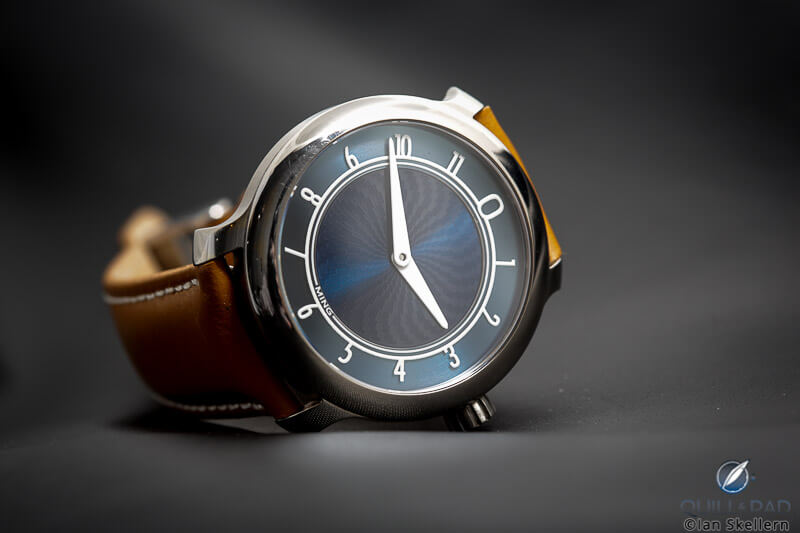
Ming’s debut watch, the now-sold out 17.01 with blue dial
That meant improving the design and quality of nearly every single component in the watch, while adding some new details to really help the 17.03 stand out. This led to new suppliers, numerous design and prototype iterations, not to mention a lengthy process to create what Thein and his team are calling the “most comfortable bracelet” they’ve ever worn.
Of course that claim is more than a bit subjective, but it goes to show how seriously Ming takes every aspect of a watch.
Built from consideration
The first aspect to change was the base movement. The 17.03 was planned to be a GMT so changing movements meant that an upgrade to the top grade only made sense. The Sellita SW330-1 movement now powering the 17.03 allowed the general case dimensions to remain nearly the same, maintaining the much sought after 38-millimeter diameter and only adding half a millimeter to the thickness, keeping it under 10 mm in height.
But the case itself changed for design reasons, needing to differentiate from the previous 17.01 to address some requirements needed for other improvements. Shaping was played with, especially in the lugs, to increase length but keep a similar feel to the flare. The extra length helps with fit (it hugs the wrist just a little better), but the shape change is largely due to the addition of a metal bracelet.
And, oh, the bracelet!
The bracelet is an extremely well-designed and meticulously honed construction that was given the design requirement to be the most comfortable bracelet made. This led to multiple iterations just to decide on the final link design, and then even more iterations to get the tolerances just right.
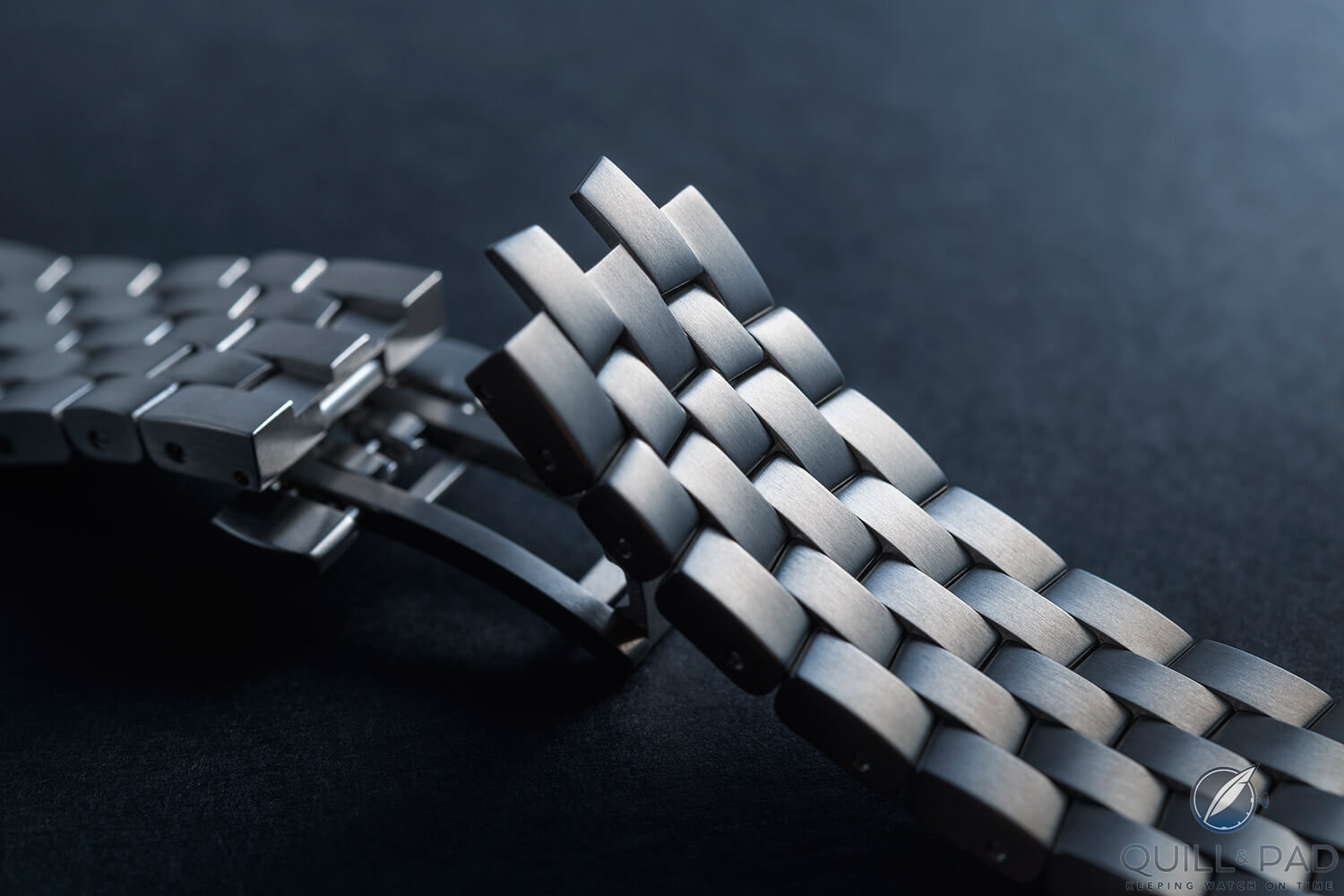
The Ming 17.03 GMT bracelet
With 114 individual links plus the pins to hold them together and the removable screws for adjusting the size, the bracelet ends up with probably 150 or more components, each with a specific tolerance for size.
The issues with tolerance stack-up were a huge factor in the design and iterations as one small change inevitably multiplied across every part, leading to wide variations in flexibility or stiffness. Tiny adjustments meant the bracelet became either too stiff or too loose, so the process to achieve the perfect flexibility and stiffness was a long exercise in persistence.
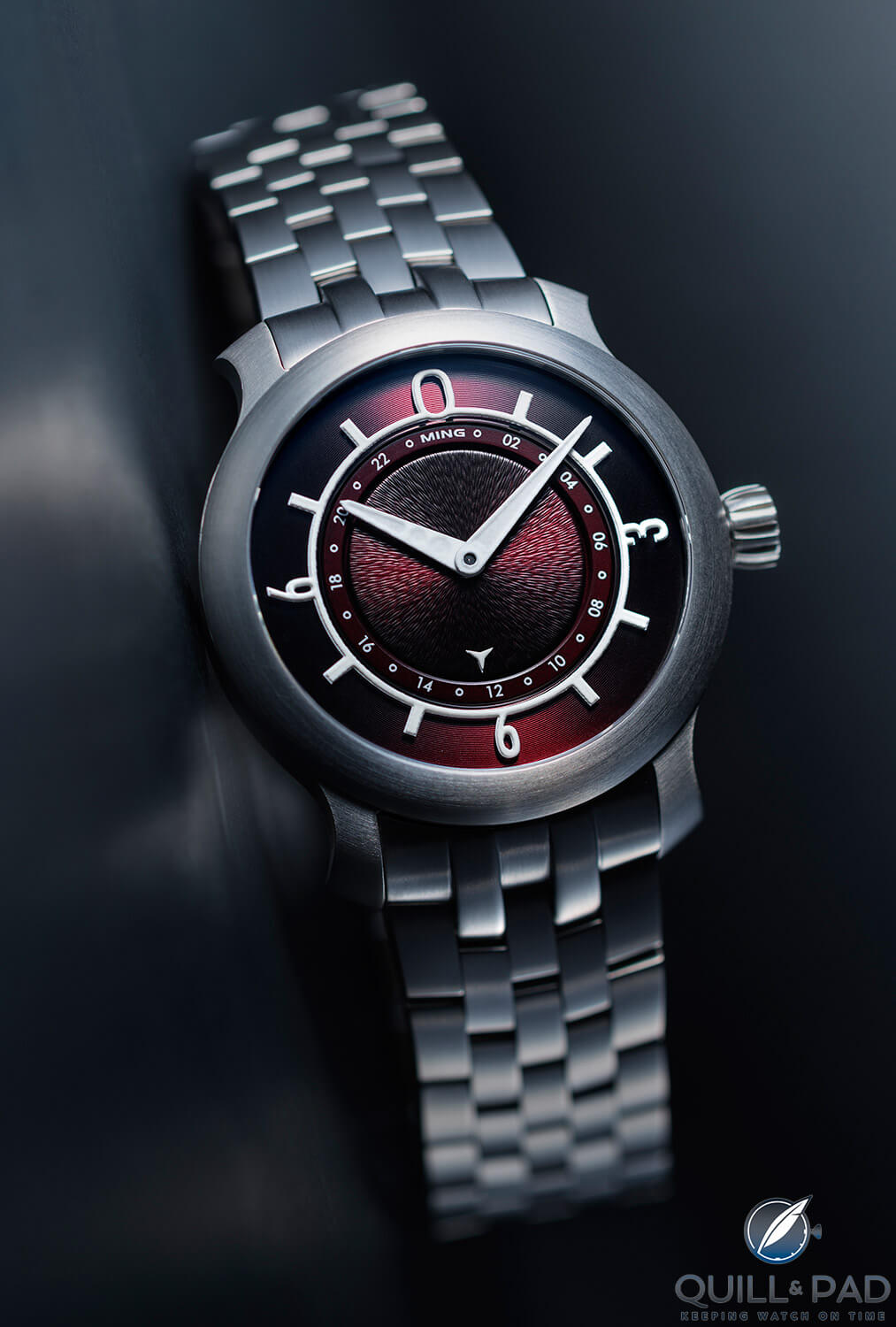
Ming 17.03 GMT on metal bracelet
Engineering nerd side note: tolerance stack up is one of the results of multiple components having acceptable tolerance ranges, usually indicated in a +/- deviation from the specified size. This deviation adds up over various or repeated components, multiplying a very small deviation of even five microns into a half millimeter total over a hundred or more components.
In the end, the links make a rather solid yet smooth assembly that hugs the wrist. A butterfly clasp in the center (with interlocking and overlapping half-links for visual continuity) combines with extremely useful quick release spring bars, completing the thoughtful details. The quick-release system means that the bracelet can easily be changed out for straps by the owner at any time.
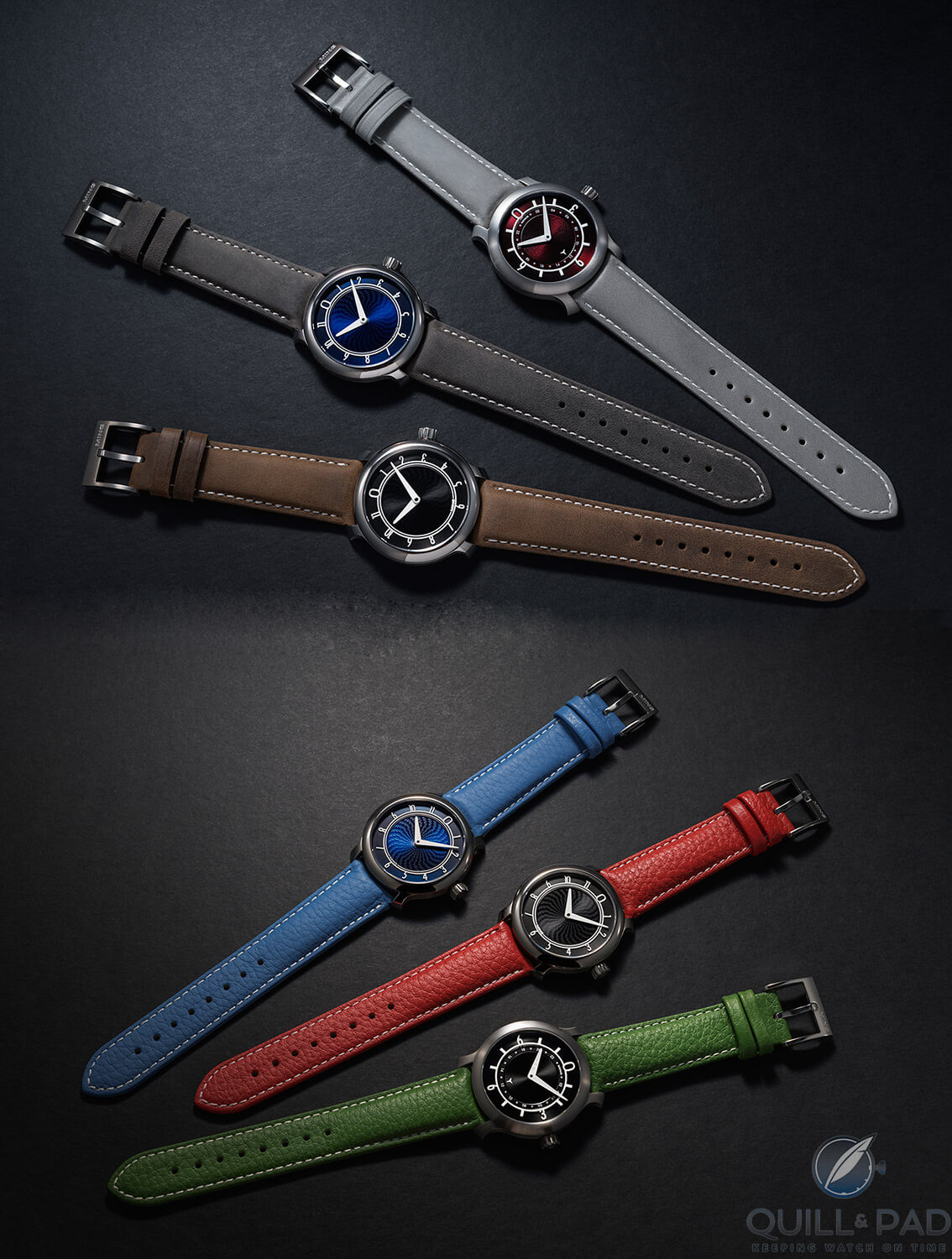
Ming strap packs
Added complications
The struggle with tolerances alone would have been enough for many brands to call it good early on, but Ming doesn’t want something that is just good; this brand wants something to be right.
The addition of the bracelet added another issue: how to add a regular strap. The team agreed that curved-end watch straps look the best due to the strap following the shape of the case and filling in the space between the lugs. But having curved spring bars for the leather straps and straight spring bars for the bracelet meant that the holes for each couldn’t be the same hole.
So instead of caving and just putting a straight-end leather strap on it, two sets of holes were drilled into the lugs, a close one for the curved spring bars, and one further out for the straight bars of the bracelet.
This also has the added bonus that you can purchase any regular straight-edge strap and use it in the holes for the bracelet, allowing personal aftermarket customization that is so important for many collectors. The hole positions are even marked on the rear of the lugs with engraved lines depicting straight and curved bars.
The driving feature of the bracelet clearly impacted a variety of choices, but many were simply due to the design direction of a sporty, functional GMT.
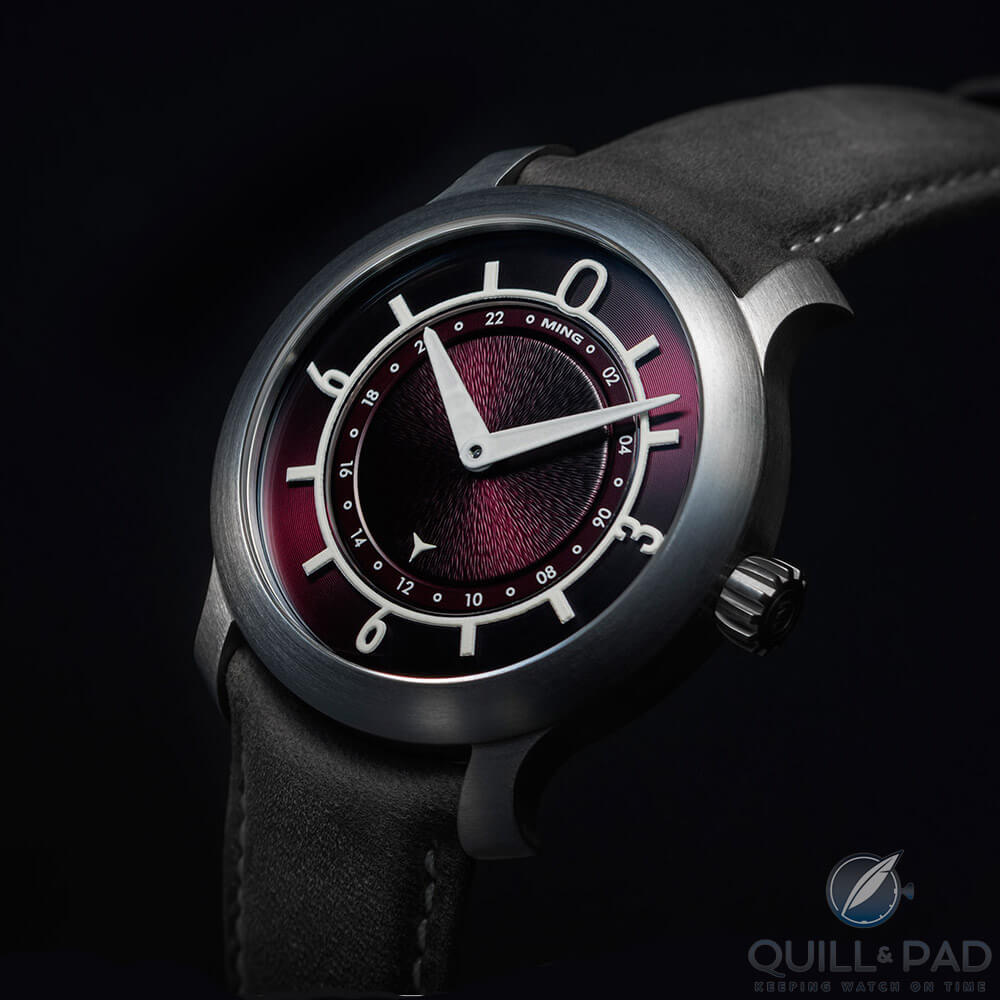
Ming 17.03 GMT
The dial lost the center stamped guilloche and, depending on the dial color, added either a very subtle sunburst brushing or a wavy stamped sunburst pattern. The center was now also replaced with a GMT hand in the form of a disk, pointing to a small ring separating the inner and outer dials.
The small 24-hour ring is subdued so as not to draw too much attention to itself, which directly counters the increased lume on the markers.
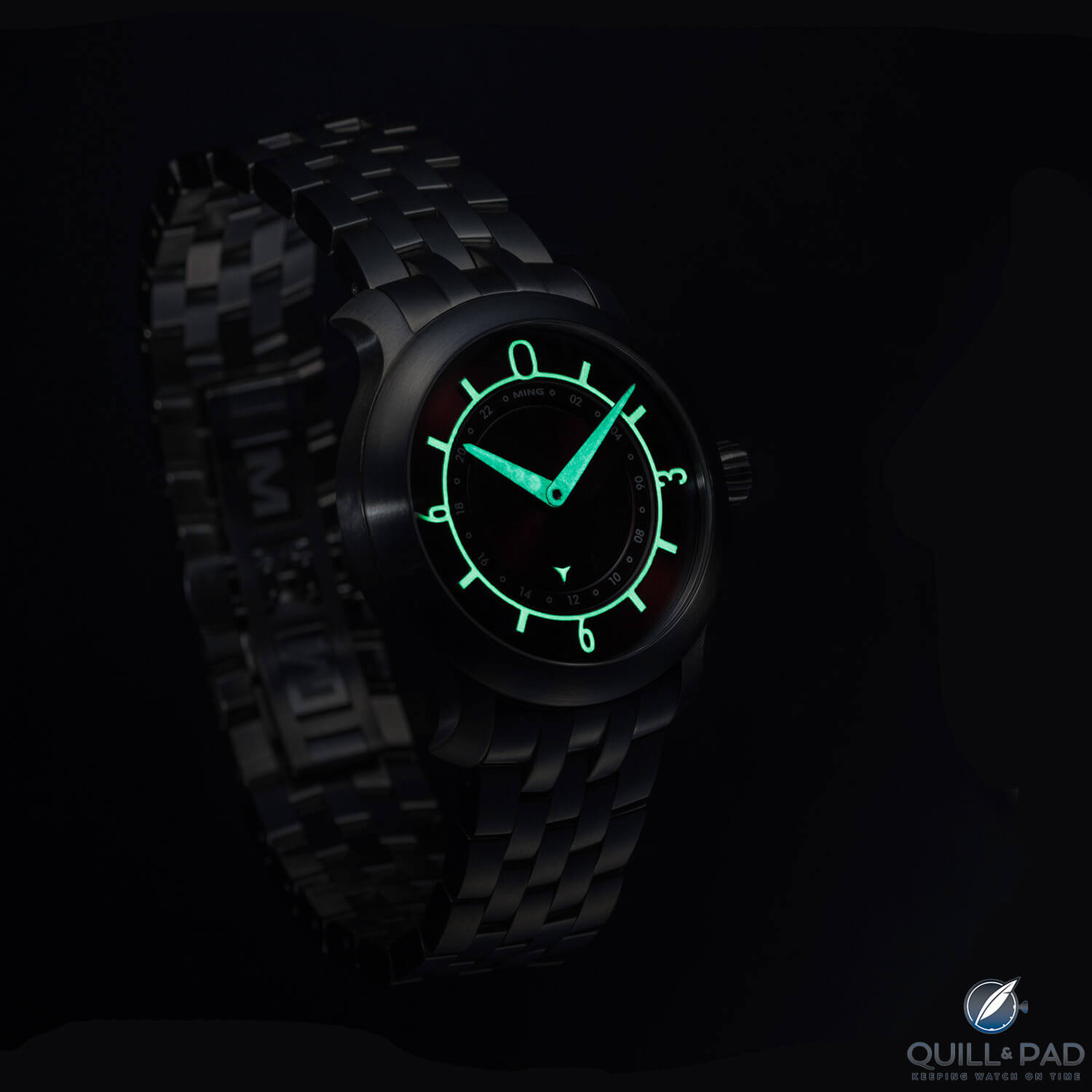
Lume shot: Ming 7.03 GMT in the dark
Consisting of 30 layers of C1 Super-LumiNova and an absence of most numerals (switched to a sector style), the dial is very bright while the design is much cleaner even with the added display of the GMT. The layered sapphire crystal section of the dial remains but the differences help it feel like a largely new watch even with its close relation to the 17.01.
The whole package
The rest of the changes are small, yet when combined make a huge impact on the quality of the 17.03. The entire package becomes a little more special with the addition of some details: grade 2 titanium for a slightly darker case, five layers of anti-reflective coating on the inside and outside of the sapphire crystal, added Super-LumiNova, and even a tiny star that points to the 24-hour ring.
On that note, even the packaging has been reworked to make a much more practical (and environmentally friendly) watch kit that includes a simple, locally sourced timber box that is reusable for a variety of things; a nice leather watch pouch for multiple watches, straps, and strap tool; and an additional two straps on top of the bracelet. And all of this is included for one price, which makes the increase over the original model even more of a bargain.
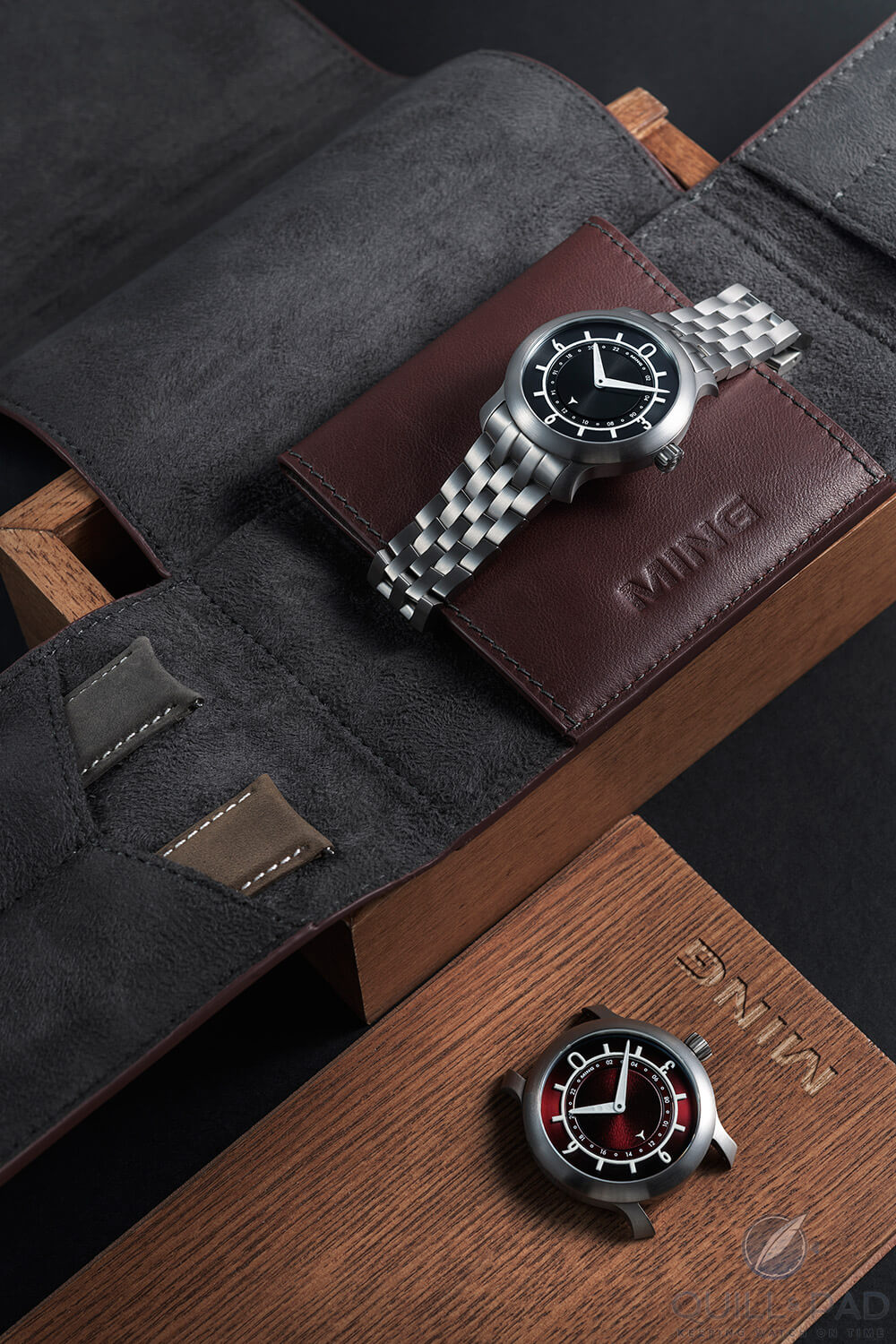
High quality and environmentally friendly Ming 17.03 GMT packaging and accoutrements
Each debut is getting better, more focused and purposeful, with as many aspects as possible considered from every angle to make the purchase something that might be easier to justify.
Given that the people behind it are so understanding of the issues facing watch collecting, it should come as no surprise that every new release is another chance to hone in even more on what makes a great watch also a great investment.
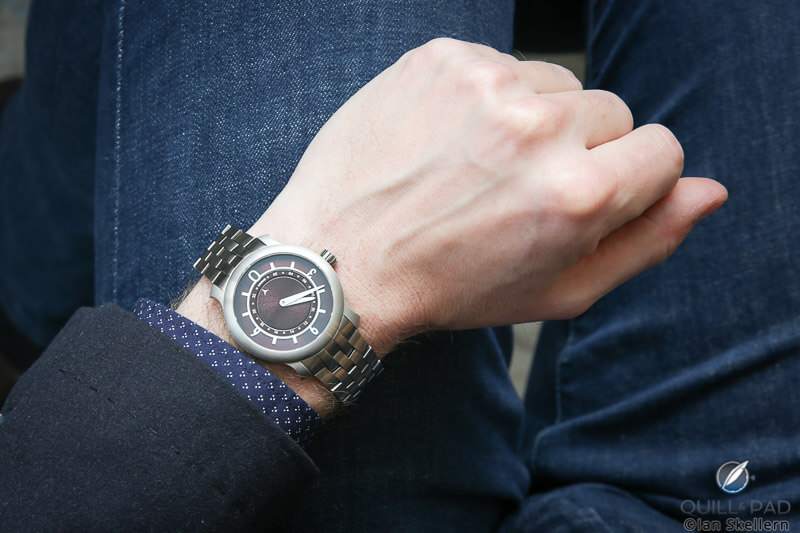
Ming 17.03 GMT on the wrist
The Ming 17.03 GMT is a pretty great watch, and it stands on its own merits while also following a new lineage that is bound to give us some pretty cool timepieces in the somewhat near future. Knowing that the brand has so much in the works, I am fairly sure it won’t be too long before we can confirm if Ming is, in fact, on a roll.
But until then, let’s roll on to the breakdown!
- Wowza Factor * 7.4 The highly anticipated follow-up to the 17.01 does not disappoint!
- Late Night Lust Appeal * 74 » 725.692m/s2 Given that the 17.03 is not going to be limited and is made better than its predecessor is plenty of reason to lust all night!
- M.G.R. * 39.4 A solid, hacking seconds GMT movement from Sellita is no slouch!
- Added-Functionitis * Mild The added GMT/24-hour function is rather handy, but by no means excessively complicated. Still, you may need children’s strength Gotta-HAVE-That cream to deal with this affordable swelling!
- Ouch Outline * 9.8 Catching your shin with a hammer! Always look where you swing! It can really smart, but it isn’t as smart as making sure one of these finds its way onto your wrist!
- Mermaid Moment * Just long enough to swap out the bracelet for a strap and back again with no tools! Seriously, quick-release bracelets need to be more of a thing, and the inclusion of two quick-release straps just rounds out the reasons why I need to book a minister!
- Awesome Total * 503 Multiply the number of hours the caliber is individually tested (250) by the grade of the titanium in the case (2), then add the number of strap/bracelet options that come with the 17.03 (3) and you’ll end up with a very enticing awesome total!
For more information, please visit www.ming.watch/collections/17.
Quick Facts Ming 17.03 GMT
Case: 38 x 9.8 mm, grade 2 titanium
Movement: automatic Sellita Caliber SW330-1
Functions: hours, minutes, hacking seconds; second time zone with 24-hour indication
Price: 1,650 Swiss francs
Leave a Reply
Want to join the discussion?Feel free to contribute!





















































Just a shame that the dials, hands and cases are all so ugly!
Great write up!
I have the 17.01, and it is a well-designed and well thought-out watch.
The new 17.03 is a compelling proposition as well. I will probably pull the trigger on a Burgundy variant soon.
Cheers
blog is so amazing that i can’t take off my eyes because all the watches are so fab that erasily can make a perfect wardrobe
I have the 17.01, and I like the watch quite a bit. The only extremely frustrating thing about the watch is the impossibility of getting after market straps. I have a large wrist and the straps barely fit. I contacted the company and was told I would have to order a completely custom strap. They recommend a Paris based company and the cost for the custom strap was $475! I passed. For a company that claims to cater to every want of the collector community, making lugs to only accommodate their proprietary straps is obnoxious to the extreme. I’m glad they changed it up on the 17.03. I wish them the best.